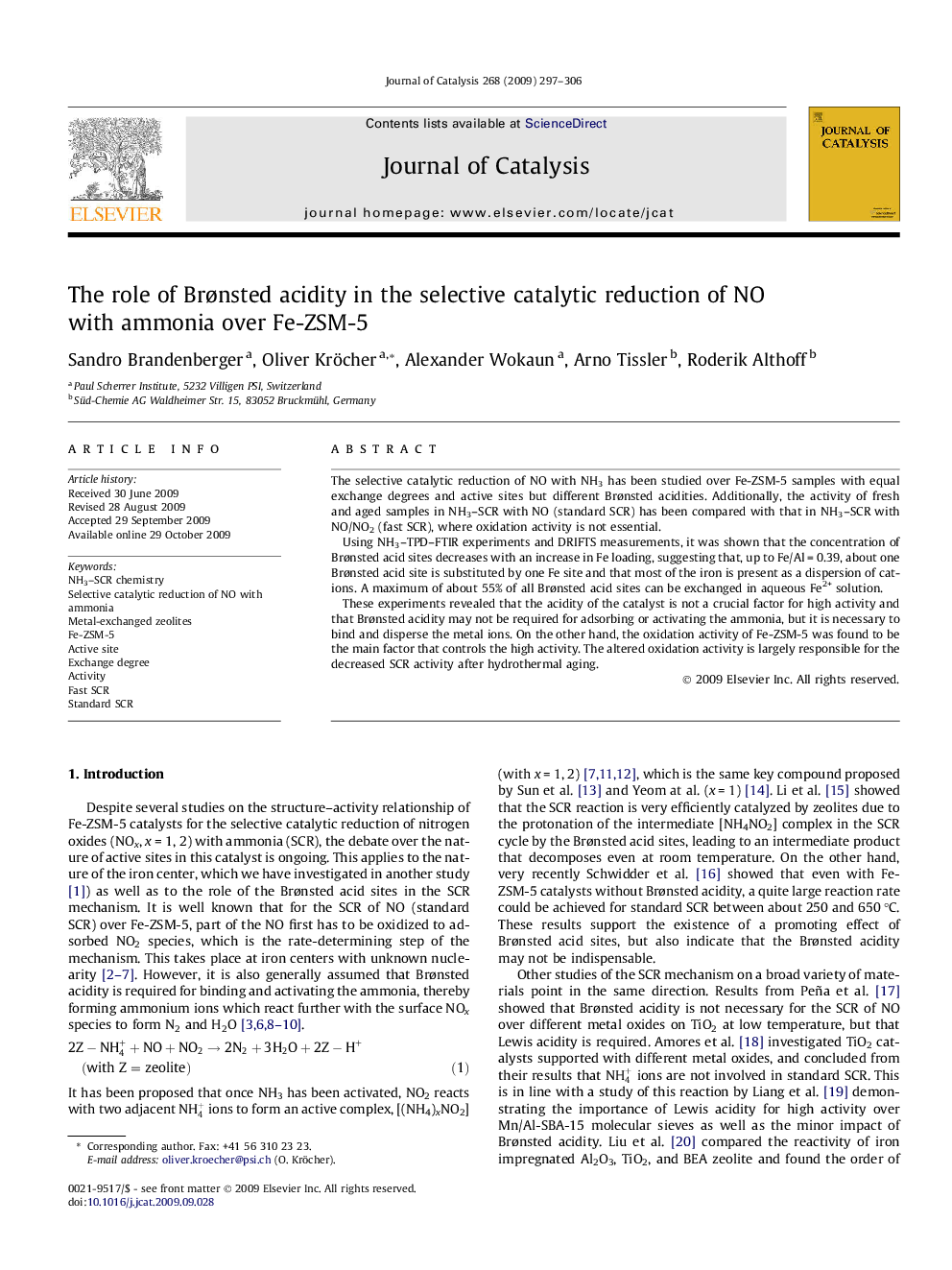| Article ID | Journal | Published Year | Pages | File Type |
|---|---|---|---|---|
| 61971 | Journal of Catalysis | 2009 | 10 Pages |
The selective catalytic reduction of NO with NH3 has been studied over Fe-ZSM-5 samples with equal exchange degrees and active sites but different Brønsted acidities. Additionally, the activity of fresh and aged samples in NH3–SCR with NO (standard SCR) has been compared with that in NH3–SCR with NO/NO2 (fast SCR), where oxidation activity is not essential.Using NH3–TPD–FTIR experiments and DRIFTS measurements, it was shown that the concentration of Brønsted acid sites decreases with an increase in Fe loading, suggesting that, up to Fe/Al = 0.39, about one Brønsted acid site is substituted by one Fe site and that most of the iron is present as a dispersion of cations. A maximum of about 55% of all Brønsted acid sites can be exchanged in aqueous Fe2+ solution.These experiments revealed that the acidity of the catalyst is not a crucial factor for high activity and that Brønsted acidity may not be required for adsorbing or activating the ammonia, but it is necessary to bind and disperse the metal ions. On the other hand, the oxidation activity of Fe-ZSM-5 was found to be the main factor that controls the high activity. The altered oxidation activity is largely responsible for the decreased SCR activity after hydrothermal aging.
Graphical abstractThe selective catalytic reduction of NO with NH3 has been studied over Fe-ZSM-5 samples with equal exchange degrees and active sites but different Brønsted-acidities. The experiments revealed that the acidity of the catalyst is not a crucial factor for high activity and that Brønsted-acidity may not be required for adsorbing or activating the ammonia.Figure optionsDownload full-size imageDownload high-quality image (78 K)Download as PowerPoint slide
